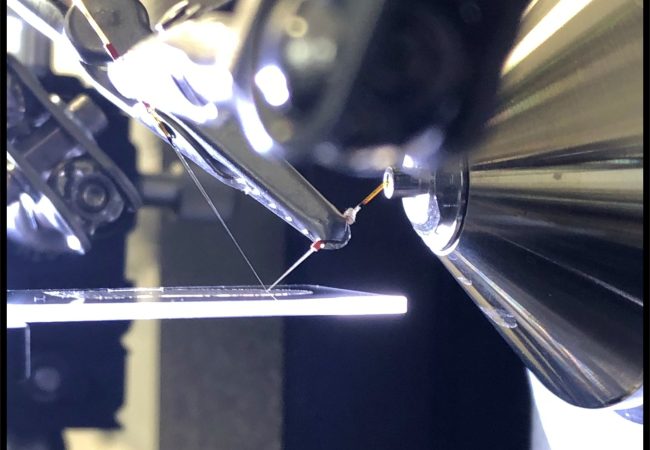Peter Hughes

Thesis Title: Native Ambient Mass Spectrometry of OPA1 Haploinsufficiency
Franklin Supervisors: Professor Helen Cooper, Dr Logan Mackay, Dr Judy Kim
University: University of Leeds
University Supervisors: Professor Frank Sobbot, Helen Foster
External Collaborators: Cardiff University Hospital, University College London (Professor Glen Jeffrey)
OPA1 haploinsufficiency is a major cause of Autosomal Dominant Optic Atrophy (ADOA), a debilitating neurodegenerative disorder arising from mitochondrial dysfunction. The condition primarily leads to progressive visual loss but can also manifest as hearing impairment and muscular dystrophy–like symptoms. Currently, there is no known cure, and existing treatments only slow disease progression; therefore, advancing our understanding of the molecular mechanisms underlying ADOA is essential for the development of effective therapies. Native ambient mass spectrometry (NAMS) offers a powerful, label-free approach for spatially mapping proteins and their noncovalent interactions within intact tissue environments. In this project, proteins uniquely associated with the disease state will be identified through imaging-based studies and characterised using top-down mass spectrometry. A secondary objective is to enhance the robustness, spatial resolution, and analytical throughput of the NAMS platform, with a particular focus on improving nano–desorption electrospray ionisation (nano-DESI) performance.
Peter Hughes graduated from Loughborough University with an integrated master’s in Pharmaceutical and Medicinal Chemistry. His master’s project applied proteomics to study polymer nanoparticle protein coronas, and he spent a year at Analytical Services International providing forensic toxicology and bioanalytical support for law enforcement and biomedical clients. He is now pursuing a PhD investigating OPA1 haploinsufficiency in Autosomal Dominant Optic Atrophy using native ambient mass spectrometry imaging to explore mitochondrial dysfunction.

Native ambient mass spectrometry
Native ambient mass spectrometry (NAMS) combines spatial and structural biology by enabling untargeted label-free interrogation of proteins in their functional form directly from their physiological environment.

3D Protein Atlas of Brain
Native ambient mass spectrometry (NAMS) is an emerging technology which offers unprecedented potential for integration of spatial and structural biology – it promises major advances in molecular pathology and drug discovery.
No publications found.
